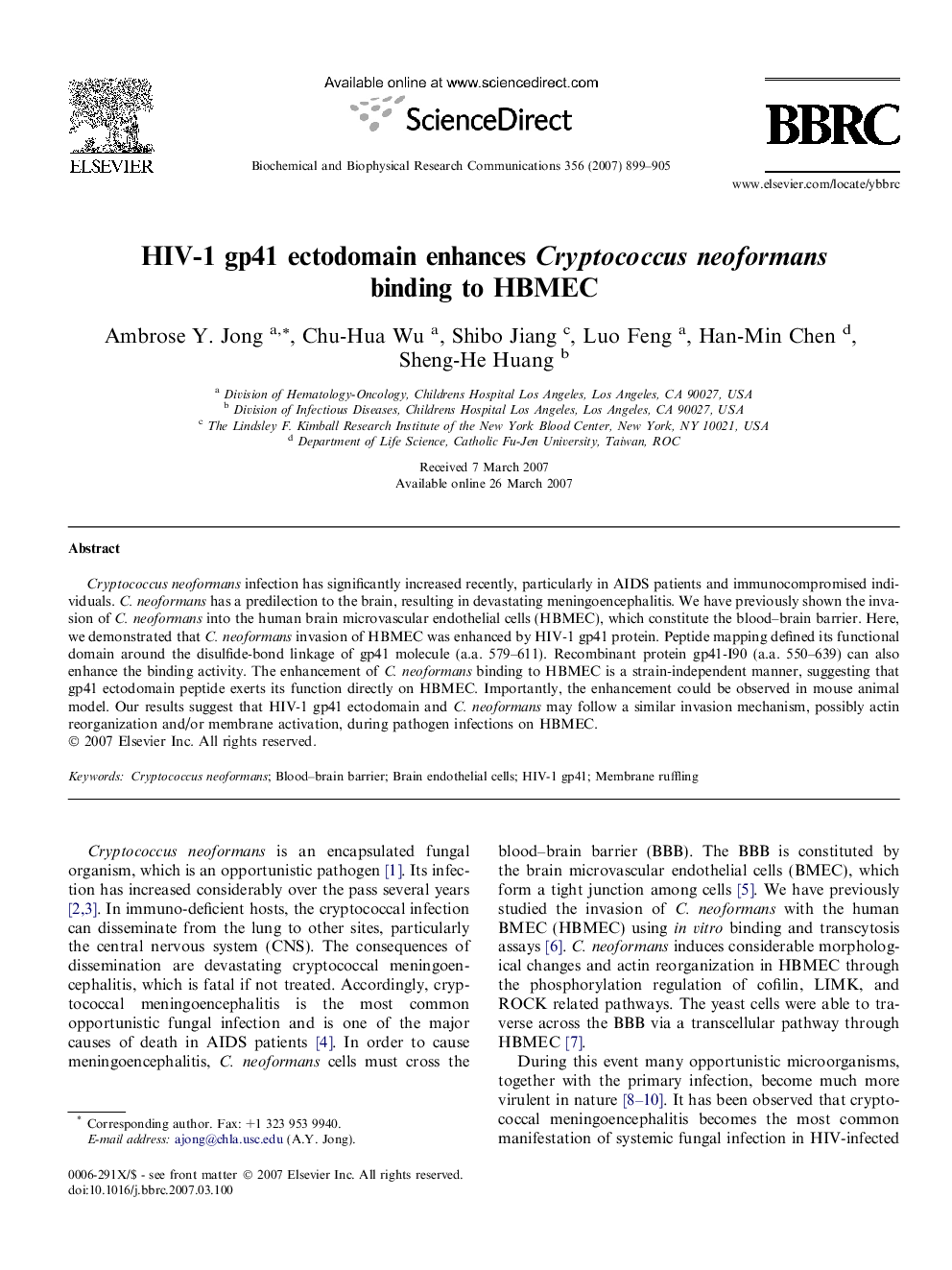| Article ID | Journal | Published Year | Pages | File Type |
|---|---|---|---|---|
| 1938546 | Biochemical and Biophysical Research Communications | 2007 | 7 Pages |
Cryptococcus neoformans infection has significantly increased recently, particularly in AIDS patients and immunocompromised individuals. C. neoformans has a predilection to the brain, resulting in devastating meningoencephalitis. We have previously shown the invasion of C. neoformans into the human brain microvascular endothelial cells (HBMEC), which constitute the blood–brain barrier. Here, we demonstrated that C. neoformans invasion of HBMEC was enhanced by HIV-1 gp41 protein. Peptide mapping defined its functional domain around the disulfide-bond linkage of gp41 molecule (a.a. 579–611). Recombinant protein gp41-I90 (a.a. 550–639) can also enhance the binding activity. The enhancement of C. neoformans binding to HBMEC is a strain-independent manner, suggesting that gp41 ectodomain peptide exerts its function directly on HBMEC. Importantly, the enhancement could be observed in mouse animal model. Our results suggest that HIV-1 gp41 ectodomain and C. neoformans may follow a similar invasion mechanism, possibly actin reorganization and/or membrane activation, during pathogen infections on HBMEC.
